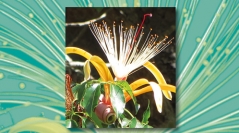

 Adansonia
44 (6) - Pages 37-47
Adansonia
44 (6) - Pages 37-47Assessing the genetic diversity of species and populations is critical for evaluating extinction vulnerability and provides important information for identifying populations of concern and/or those that should be targeted for breeding material. Baobabs (Adansonia L.) are botanical icons for conservation, with increasing attention regarding their threatened status from both scientists and non-scientists alike. Baobabs are of particular interest especially in Madagascar, where six of the eight species are endemic, and three are listed as Endangered or Critically Endangered by the International Union for Conservation of Nature (IUCN). Although A. madagascariensis Baill., A. rubrostipa Jum. & H. Perrier and A. za Baill. are more widespread and classified by IUCN as Least Concern, they show regional variation, which may reflect hidden genetic diversity or even the existence of cryptic species. Here we assess the genetic diversity of the Malagasy baobabs to serve as a basis for future conservation and management planning. Our study used a targeted sequence capture approach (hybrid enrichment) to obtain hundreds of low-copy nuclear loci with phased alleles to assess genetic diversity in the six species and their major regional subpopulations. We discuss the implications of proper delineation of species taxonomy for management issues associated with conservation. We hope such genetic information will guide more targeted population genetic assessments and inform conservation and management efforts, including identification of isolated or disjunct populations that may warrant targeted actions.
Genetic diversity, Madagascar, baobabs, Adansonia, conservation